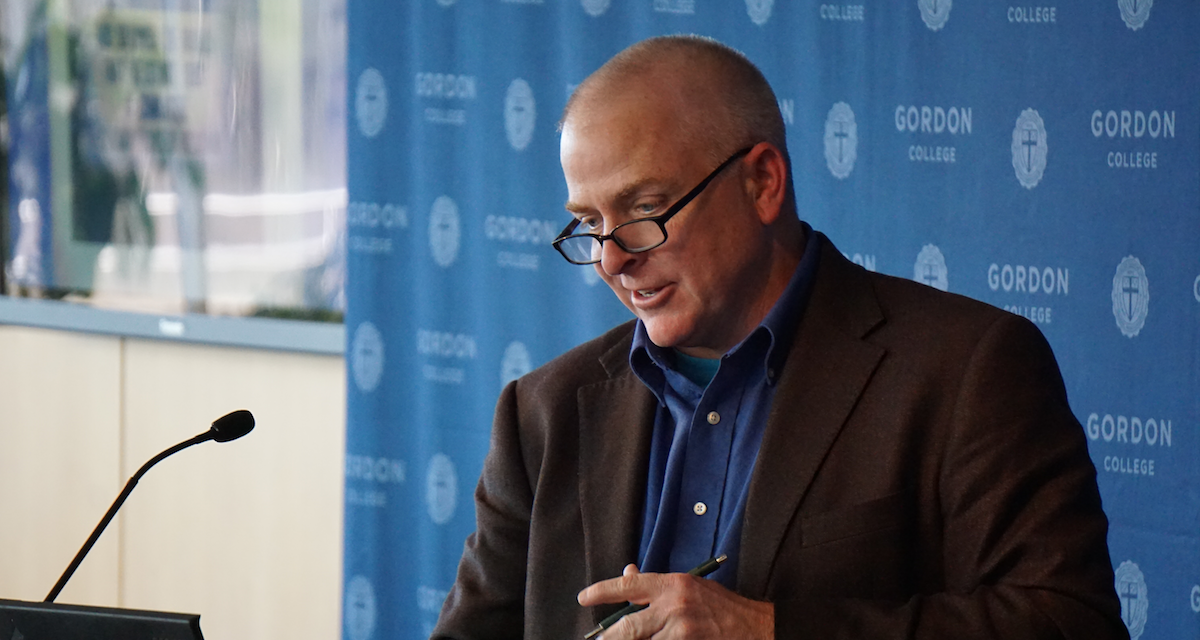Tal Howard Delivers Symposium Keynote Address
500 Years of Protestantism, 1517–2017—Now What?
“I’m persuaded that 500 years after the Reformation, evangelicals cannot simply yawn and walk away from Christ’s command that we all be one,” proclaimed Dr. Tal Howard, professor of humanities and history and Phyllis and Richard Duisenberg Chair in Christian Ethics at Valparaiso University. “The evangelical and the ecumenical imperative remain joined at the hip, as Christ himself testifies in the Gospel of John. They stand or fall together.”
We should be embarrassed that we have let down Christ and “divided his body,” Howard suggested to the standing-room-only crowd at last week’s Symposium keynote address. This ecumenically-friendly environment served as fertile ground for talks of Church reconciliation to flourish.
Howard recalled the Quasquicentennial Lecture with Cardinal Sean O’Malley, Archbishop of Boston, two years ago. In this lecture, Howard said, O’Malley spoke of new converts in Papua New Guinea feeling betrayed by the division in western Christianity over the fundamental aspects of the gospel they had just accepted. Evangelicals, Howard said, should recognize the “tragic dimensions” of the Reformation. This means that understanding the dark underbelly of the historical movement is an evangelical imperative in 2017, Howard said.
“For all his many virtues,” Howard said, “A. J. Gordon denounced Rome root and branch. ‘[W]e certainly hold the papacy,’ he wrote, ‘to be the fulfillment of Paul’s prediction of the anti-Christ.” This sentiment was commonplace in late 19th century America, Howard said.
Today, with over 200 international students, Gordon has sailed with the tides of Christianity that have welcomed—not stifled—a global Church. Around 1917, Howard said, 11 percent of Protestants lived outside of the U.S. and Europe. Today, 73 percent do.
After quoting Pope John Paul II’s encyclical “May They All be One,” Howard said, “He also wisely warned against what he calls ‘false irenicism,’ a quest for unity that papers over genuine theological differences. In short, Ut unum sint recognizes that ecumenism can be difficult and it does often have limits.”
Nonetheless, our current age of multidenominationalism would leave 16th-century reformers “aghast,” Howard said. The historical context of the Reformation, therefore, should be emphasized.
“Many of the condemnations and doctrinal statements of this era (Luther’s), whether Protestant or Catholic,” Howard said, “(were) issued from a highly propagandistic, polemical and political atmosphere.”
Luther, the igniting force behind this Reformation, nailed his 95 Theses against the door of the Wittenberg church as someone who found divine power not in the powers of this world, but rather, Howard said, in the weakness of the cross.
This year’s Symposium, Howard concluded, centered not only on the history of the Reformation but on the theme of reformation itself. “Perhaps, too, in our very weakness, in the very things that should embarrass and sadden us, that our Lord—500 years after the start of the Reformation—can still manifest his power in our weakness, and look on us with undeserved mercy to do his work.”
Article by Dan Simonds ’17, communication arts
Photo by Michael Santulli ’17, international affairs and economics
 The Bell
The Bell